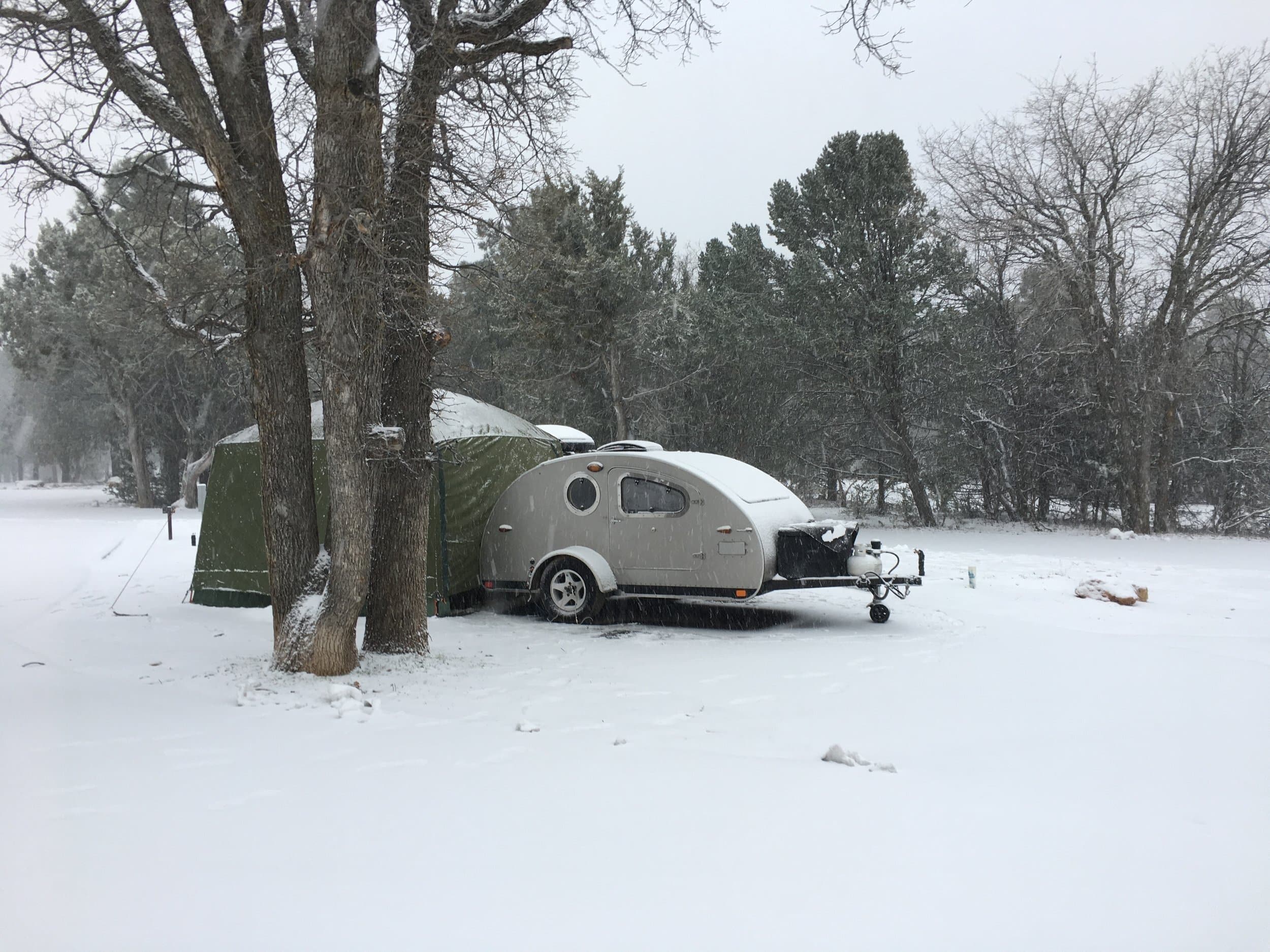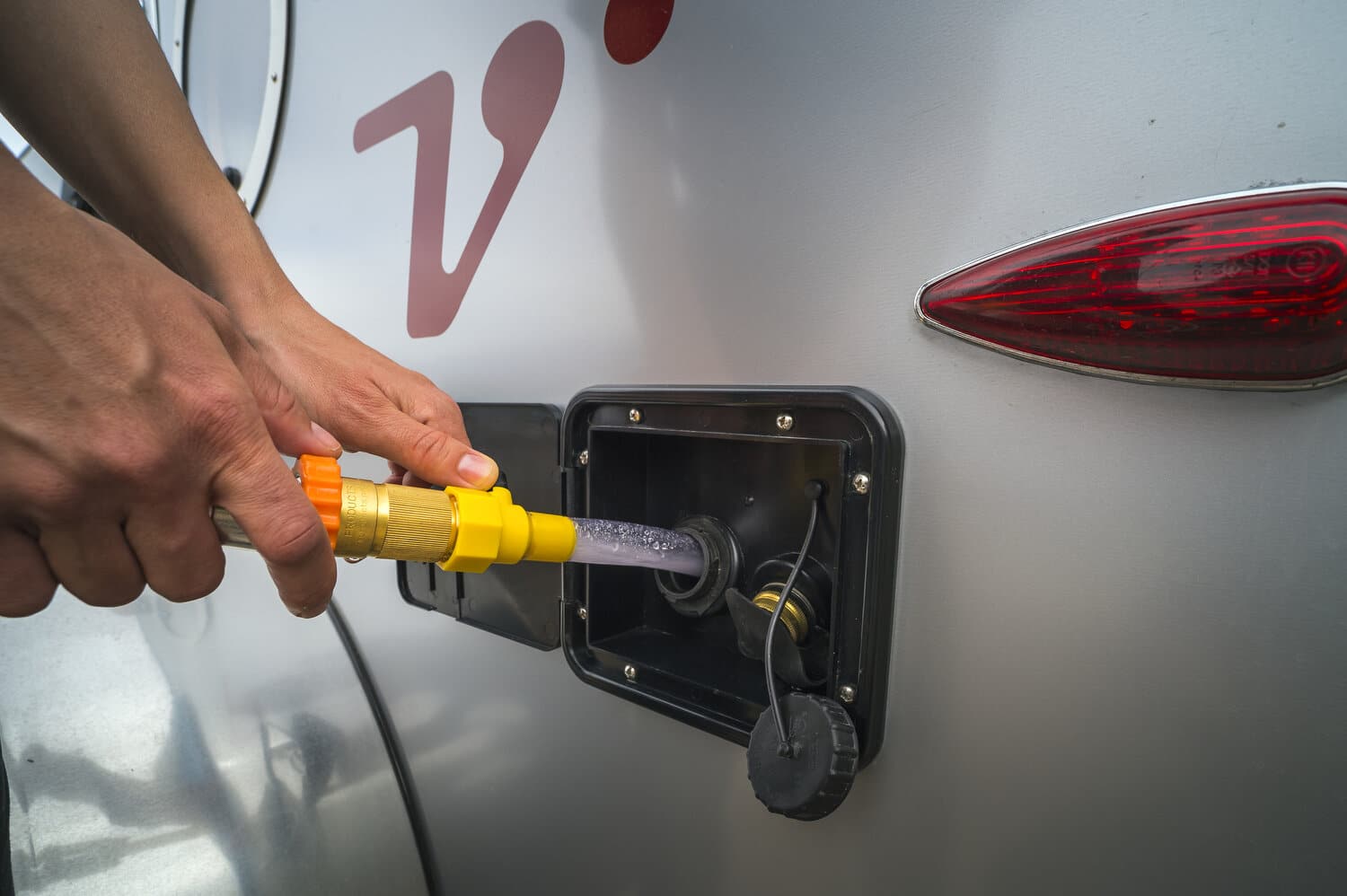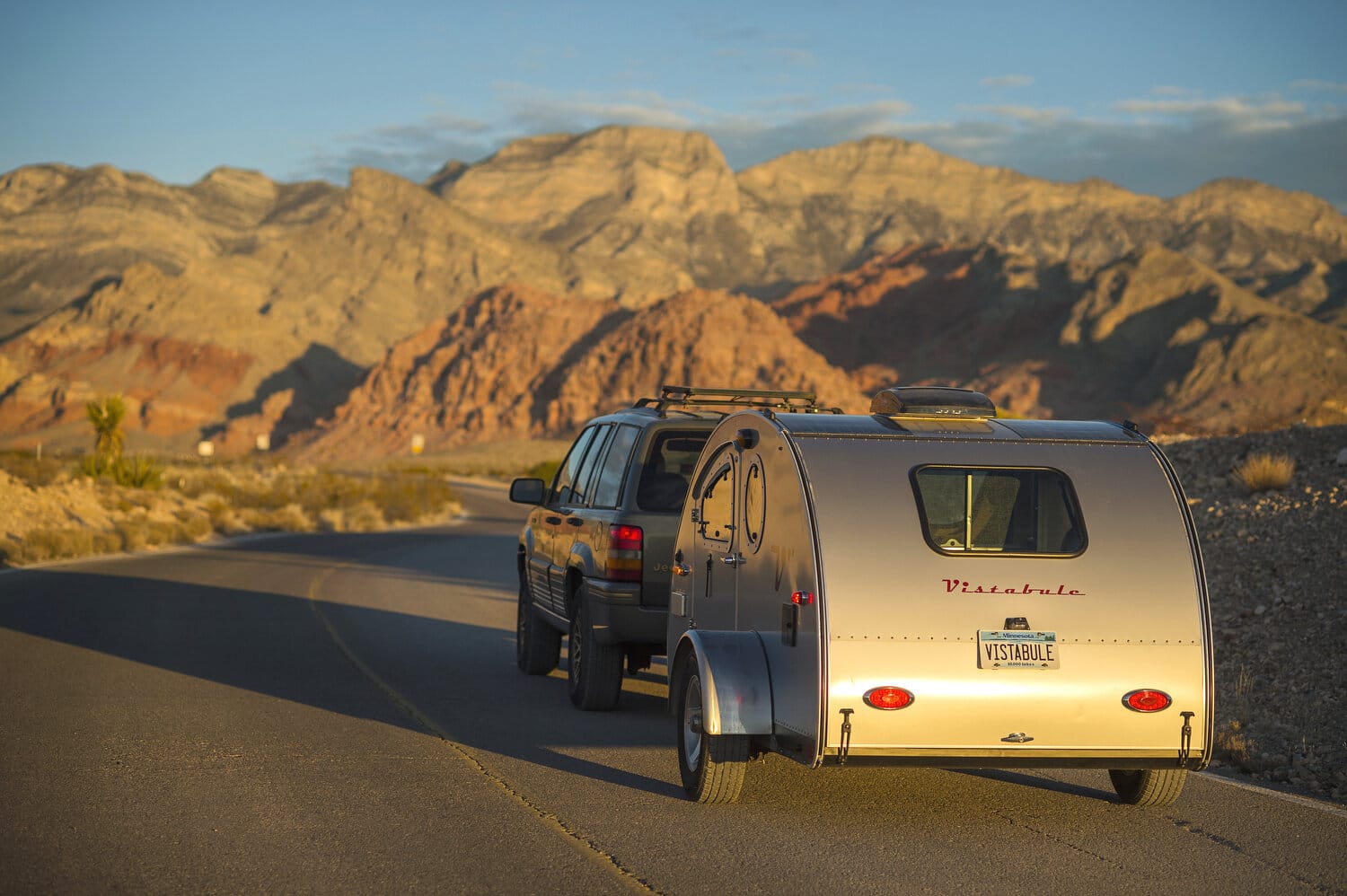Whether you’re a seasoned veteran of the road or the new owner of a travel trailer, winterizing is an essential part of storing an RV. Taking a few preventative steps can help prevent damage to vulnerable plumbing system components. After a simple system flush, you’ll be road-ready as soon as the weather warms back up again in the springtime.
Our guide on winterizing your RV will help get you ready to put your trailer into storage over the winter or head out for a cold-weather camping adventure.
In this guide we will answer:
- Do I Need to Winterize My Trailer?
- How to Winterize Your Teardrop Trailer Water Pump
- Taking Care of Your Teardrop Trailer Water System
DO I NEED TO WINTERIZE MY TRAILER?
You should always choose to winterize your trailer if you’re storing it over the winter for a few reasons. First, if you don’t choose to winterize your trailer, you could face potentially expensive repair costs. A single exposure to extended freezing temps can result in a cracked or busted water pump, tank or lines. Repairs can easily cost $100+ for smaller campers or $1,000+ for a larger trailer.
Beyond just costs, winterizing your trailer will increase its lifespan, while providing you with a more comfortable, trouble-free and safe camping experience. Problems due to improper cold weather preparation can be subtle and difficult to find. For example, small cracks and minor leaks, especially in hidden areas can lead to interior rot, mold, and mildew and even take a toll on electrical components.
When Should I Winterize My Trailer?
The general rule of thumb is to winterize your trailer when temperatures fall below freezing (32F degrees) over a continuous 24-hour period.
Depending on where you live, you may need to winterize your travel trailer as early as September, or you may not need to winterize at all. Being prepared to winterize your trailer is key, since you are at the mercy of the weather.

HOW TO WINTERIZE YOUR TEARDROP TRAILER WATER PUMP
The objective of winterizing your travel trailer’s water system is to remove the water and replace it with a small amount of RV antifreeze. This is crucial to prevent expensive damage from cracked or burst pipes. Teardrop camper trailers are usually easy to winterize because the water system is so simple. Unlike larger RVs, a teardrop trailer will have at most a freshwater tank and a gray water tank. Larger trailers can include fresh, gray and black water systems including multiple sinks, shower, and toilet. We will address fresh and gray water systems here and leave black water systems for the big guys. Here’s a step-by-step guide to prepping your trailer for cold temps:
Step 1: Drain water from all tanks
Even a small amount of water left behind in your system can cause cracks when it freezes. Gravity is your friend here so the first thing to do is open the drain valves on your freshwater tank and gray water tank if you have one. Next open all fixtures – faucets, sprayers, showers – to allow as much water as possible to drain out. For extra protection, blow compressed air through your lines to ensure every last bit of moisture is ejected.
Step 2: Close up freshwater drain
After draining the water, close the freshwater tank drain back up and move to step three.
Step 3: Add just enough RV antifreeze to the freshwater tank to allow the pump to draw antifreeze from the tank.
For a small teardrop camper like the Vistabule, pouring ¼ to ⅓ of a gallon into the 9-gallon freshwater tank is enough.
Step 4: Turn on your pump/pressure switch and run the faucet and sprayer just long enough to see the color of the antifreeze flowing through.
RV-specific antifreeze is typically pink and relatively easy to see once flowing. This will ensure the pump, lines, and fixtures are filled with anti-freeze and prevent issues during cold temps.
Step 5: In the spring: drain, flush thoroughly, and fill.
When the weather warms up again, you can drain the antifreeze from your freshwater tank. Now make sure your gray water drain valve is open or you have a catch container ready to collect the drain water. Fill your freshwater tank with about a gallon of water and run all fixtures until the tank is empty. Make sure to dispose of all antifreeze properly at a service station or mechanic shop and do not pour it down a drain or on the ground. A final flush can be performed by filling your freshwater tank and running all flow paths and allowing the water to drain on the ground. Now you’re ready to fill and hit the road.
Note: Use propylene glycol vs. ethanol antifreeze, which can cause damage to rubber seals and washers. The oral toxicity of propylene glycol-based antifreeze is very low and large quantities are required to cause perceptible health effects in humans.
TAKING CARE OF YOUR TEARDROP TRAILER WATER SYSTEM
Your teardrop trailer water system is incredibly important for having an enjoyable experience on the road. Your water system could be powering a number of tanks, from the freshwater tank to water heater tanks to gray and black tanks. Whether you’re storing your camper or are going to be traveling through cold conditions for an extended trip, it’s crucial to drain your water system to prevent the lines from freezing when not in use.
Overall, if you take the proper steps in winterizing, you’ll keep your travel trailer in tip-top shape, while making the overall camping experience more enjoyable when the weather warms back up.
What are you waiting for? Head over to our page and start planning the trailer of your dreams!
Related Posts

A Look Inside Teardrop Camper Interiors
Outdoor and camping enthusiasts are increasingly turning to teardrop campers as a way to get outside and enjoy nature while retaining many comforts of home. Lightweight and easy to haul behind most vehicles with a hitch, modern teardrop campers can have many of the amenities you could find in the larger recreational vehicles.

